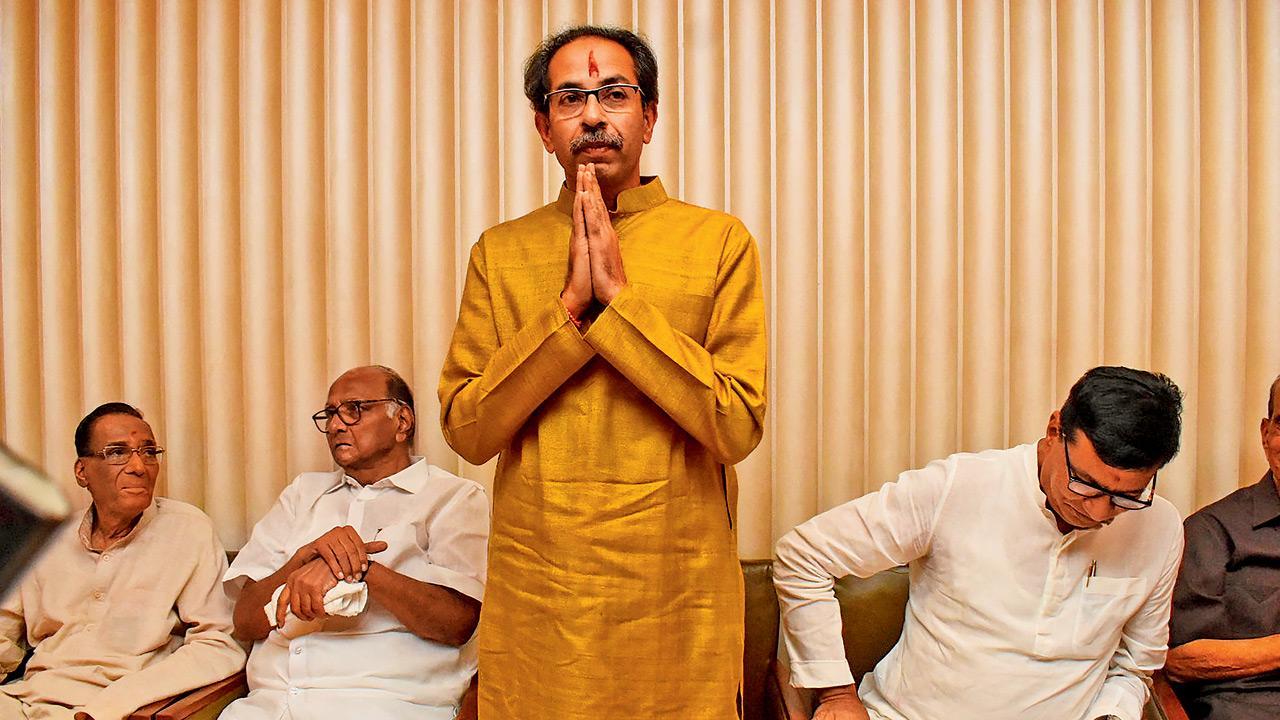State to step up O2 production to 3,000MT/day in coming weeks and build field hospitals

Chief Minister Uddhav Thackeray asked district collectors to be prepared. Pic/AFP
The seven districts of Maharashtra where the Delta Plus variant was found were put on high alert on Thursday. Chief Minister Uddhav Thackeray asked district collectors to not ease restrictions anytime soon, but to decide strict curbs considering the risk factors. Reminding them of the crisis during the second wave, he told the health department to prepare for providing adequate oxygen supply and ICU beds across the state.
ADVERTISEMENT
Cops drive away people at Bandstand, Bandra, on Wednesday, as part of Covid-19 related curbs. Pic/Shadab Khan
The CM’s advisory came after the Cabinet authorised him to impose all possible restrictions to stop the dangers posed by the highly virulent Delta Plus. Raigad, Ratnagiri, Sindhudurg, Satara, Sangli, Kolhapur and Hingoli districts were specifically told to be very attentive because of the new variant cases there. In addition to concerns over Delta Plus, the districts also have twice the number of cases than the first wave.
“The second wave isn’t over yet. We may have decided levels for easing curbs but you [collectors] must consider the risk factors in your jurisdictions. Transmission will increase if people disregard protocol while transacting their daily business and crowd places. Don’t open up everything anytime soon,” said Thackeray.
Before meeting oxygen manufacturers later in the day, Thackeray told collectors that they must start storing oxygen, medicines and other medical essentials. “Be prepared to build field hospitals. Identify buildings and open spaces.”
Chief Secretary Sitaram Kunte said that the seven districts could be a major concern because of the traces of the Delta Plus variant. Covid Task Force members Dr Sanjay Oak and Dr Shashank Joshi asked districts to enhance testing, tracing and vaccination, and impose ‘harsh restrictions’ when needed.
Oxygen target revised
Thackeray set a daily target of 3,000 metric tonnes for oxygen manufacturers in the state, who have been given concessions to make the state oxygen reliant. Considering the acute shortage during the second wave, the manufacturers were told to create the manufacturing and storage capacity in the next three to four weeks, the time by which the third wave is expected to strike. Currently, the state produces 1,300 MT of oxygen. In the summer, the demand-supply gap was mitigated by getting supplies from other states and through imports.
 Subscribe today by clicking the link and stay updated with the latest news!" Click here!
Subscribe today by clicking the link and stay updated with the latest news!" Click here!






